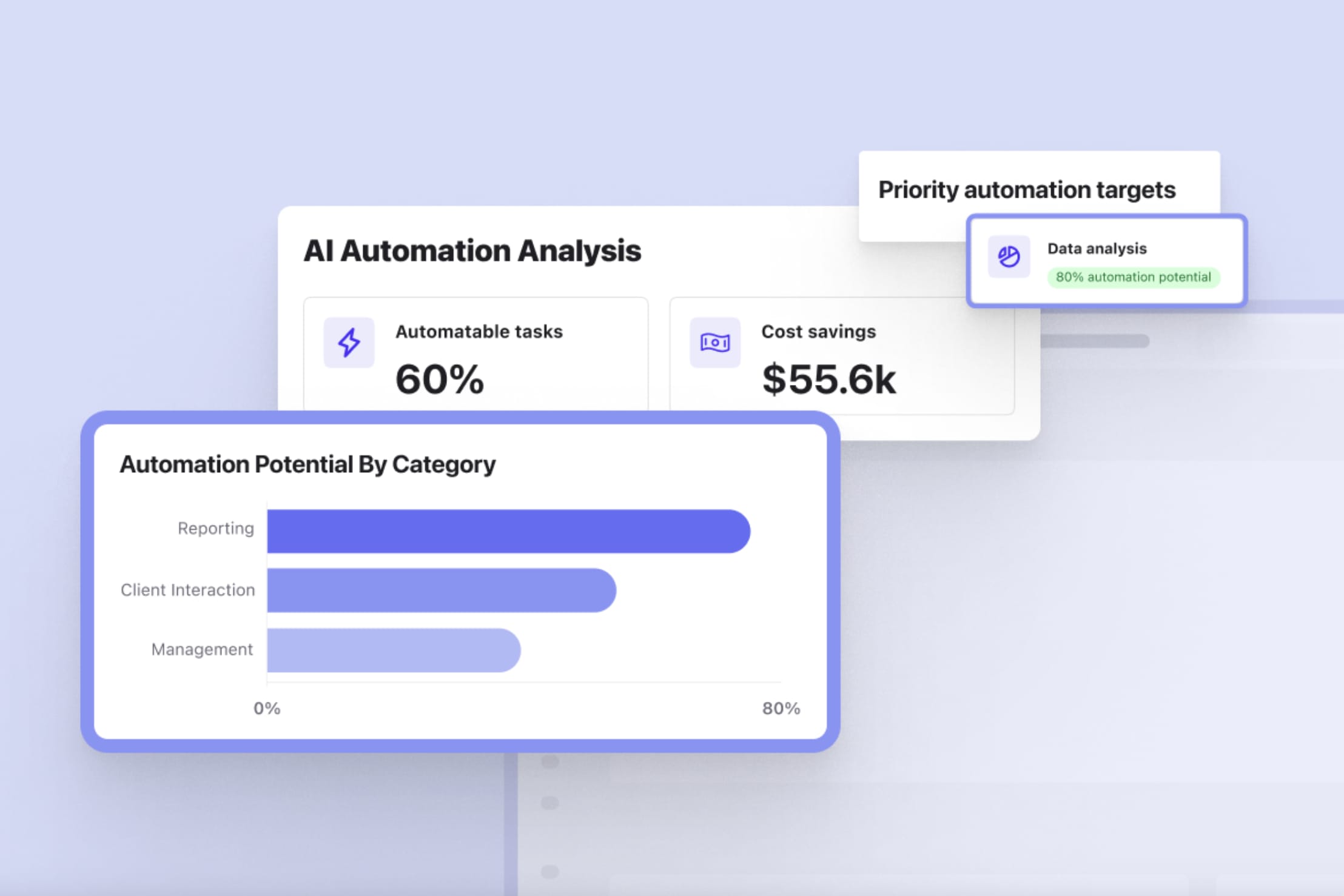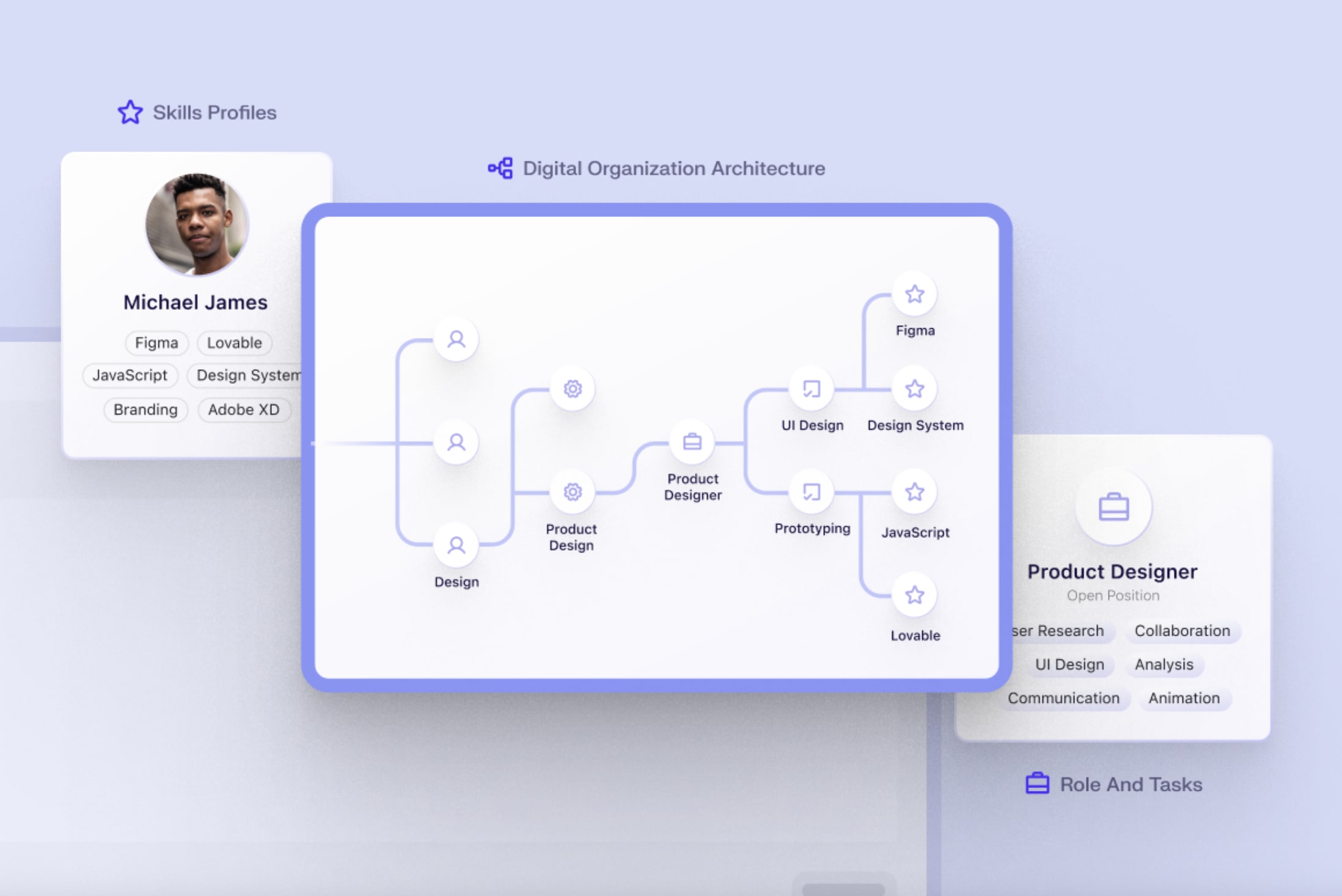What Is a Digital Twin Organization?
“Digital twins can help many kinds of organizations simulate real situations and their outcomes, ultimately allowing them to make better decisions.” – McKinsey
Traditional approaches to workforce planning and organizational design are at breaking point, as technology evolves faster than companies can keep up. They must make talent-related decisions with more speed, without sacrificing precision – and they need a clearer, more connected view of how work gets done, and how it is changing.
Enter the Digital Twin Organization: a continuously evolving model of your workforce, powered by connected, contextual data on talent, skills and tasks. This approach allows you to simulate change, identify gaps, and align talent strategy with business priorities – before you make high-stakes decisions.
So, what is it?
A Digital Twin Organization is a real-time, dynamic model of your workforce: not just who works where, but what work is being done, which skills are being used (or underused), and where your opportunities and risks lie.
Just like digital twins in manufacturing or aviation create virtual models of physical assets to test performance, a digital twin of the workforce lets you simulate, optimize, and evolve your organization before making real-world changes.
It becomes a decision-making engine, enabling more precise, faster, and better-aligned actions across talent, operations, and transformation.
Imagine being able to test changes to your organization the same way you’d test a prototype. You want to introduce a new AI tool. What tasks does it affect? Who will be impacted? Which skills will no longer be needed – and which new ones will be critical? With a Digital Twin Organization, you can model all of this before you roll it out, so you can plan transitions, upskilling, or recruitment accordingly. It’s like having X-ray vision for your workforce – and a simulation engine to stress-test decisions before you commit.
Why now?
Workforce-related challenges are piling up.
1. Work is evolving faster than jobs.
Eighty-two percent of leaders say they’re confident that they’ll use digital labor to expand workforce capacity in the next 12–18 months. – Microsoft Work Trend Index Annual Report 2025
AI and automation aren’t necessarily replacing entire roles: but they are changing how work is done at the task level. That means the traditional way of thinking about jobs as fixed units is becoming outdated. To keep up, companies need a more granular view of what people actually do – and how those tasks are shifting in this new labor landscape.
2. Workforce data is scattered and disconnected.
Most organizations have their people data spread across different systems: HR software, spreadsheets, talent platforms. These systems don’t talk to each other, and they rarely include external insights like labor market trends or emerging skill demands. This makes it hard to get a complete picture of your workforce or plan effectively for the future.
Only 18% of CHROs believe their organization consistently use data analytics to drive better, forward-looking people-related decisions. – Korn Ferry CHRO Survey Insights
3. Business change is constant.
Whether it’s launching a new product, entering a new market, cutting costs, or adopting new technologies, companies need to move fast: and that means knowing who they have, what they can do, how to redeploy or develop them quickly – or what skills you may need to look externally to add.
Fifty seven percent of business executives say they’re missing opportunities because they can’t make decisions fast enough. – PwC Pulse Survey
Creating a Digital Twin Organization helps you address all three of these challenges. It brings together internal and external data – on people, skills, tasks, and roles, as well as your business priorities – into a connected, dynamic model. That model makes it easier to understand your current workforce, simulate changes, and then take action with confidence.

What goes into a Digital Twin Organization?
Creating a digital twin isn’t just about having lots of rich data: it’s about structure, context, and continuous updates. It typically includes:
- People data – job history, skills, experience, intent signals, potential
- Task-level insight – what work is being done, and how it’s evolving
- Job architecture – standardized roles and skill-task relationships across the org
- External labor market signals – trends, benchmarks, competitor activity
- Organizational context – priorities, transformation plans, workforce strategy
When this data is integrated, structured, and kept up to date, it becomes possible to model the organization, and simulate potential scenarios, with far greater precision.

What can you do with a Digital Twin?
A well-designed digital twin enables new levels of visibility, foresight, and control. Some key use cases:
1. Scenario planning and “what-if” modeling
Organizations can simulate major events – like AI rollouts, restructures, or market expansions – and see how they affect skills demand, redundancy risks, or hiring needs.
2. Skills gap analysis
Rather than rely on guesswork or static dashboards, teams can pinpoint emerging gaps and mismatches in the flow of work … and act on them through upskilling, internal mobility, or external hiring.
3. Smarter workforce planning
With a living model of the organization, leaders can design more adaptive structures: right-sizing teams, forecasting talent needs, and aligning people with strategic priorities.
4. Task-level transformation
Because the model includes insight at the skill and task level, not just job titles, organizations can model automation risk or opportunity within roles, not just across them: essential for understanding the real impact of AI.
5. Faster, aligned execution
Once strategies are defined, the digital twin can power talent matching, role redesign, pipeline development, and real-time reporting – closing the gap between planning and action.
What makes a Digital Twin work?
To be effective, a digital twin must be:
- Structured: built on a consistent data model that integrates people, skills, jobs, and business context
- Dynamic: continuously updated with real-world signals from systems, markets, and employee behavior
- Explainable and trustworthy: governed by principles of transparency and responsible AI
- Actionable: not just a map, but a tool for decision-making, execution, and performance tracking
It’s not enough to have more insights. A digital twin is about turning data into direction.
The impact: From reactive to ready
Organizations that operate with a digital twin of their workforce are better equipped to:
- Respond quickly to change – be it tech disruption, shifting demand, or economic turbulence
- Align people decisions with strategy (based on data, not hierarchy or guesswork)
- Enable transformation, by identifying and unlocking existing potential in the workforce
- Reduce risk, by modeling outcomes before acting
Most importantly, a Digital Twin Organization shifts the role of HR and workforce strategy from reactive to proactive – or, from firefighting to foresight.
How Beamery can help
Beamery helps you build a Digital Twin Organization by connecting your internal data with real-time external signals – and structuring it in a dynamic, explainable model that evolves as your business does. Our platform gives you:
- A task-level view of work, skills and potential across your workforce
- An embedded AI agent to help you model change, spot gaps, and identify opportunities – so you can act with confidence
- Deep skills intelligence tied to your unique job architecture and business priorities
- Connected workflows that bridge planning and execution – from talent mapping to internal mobility to pipeline development
With Beamery, HR leaders can make faster, better-aligned decisions – and be ready for whatever’s next.